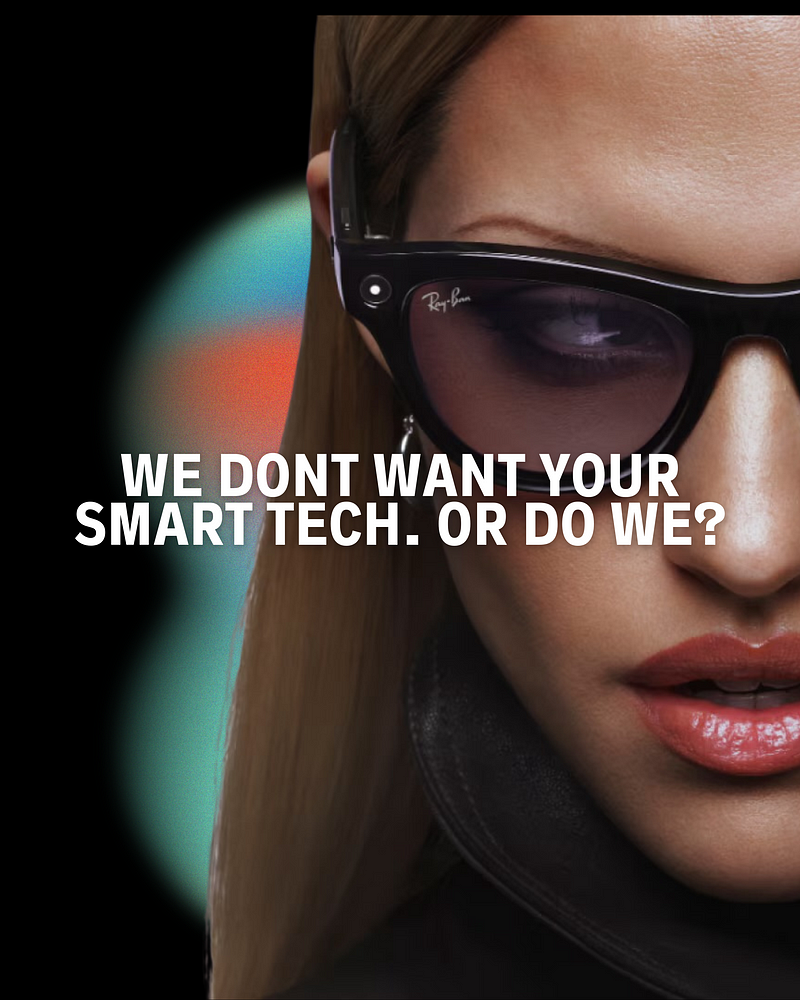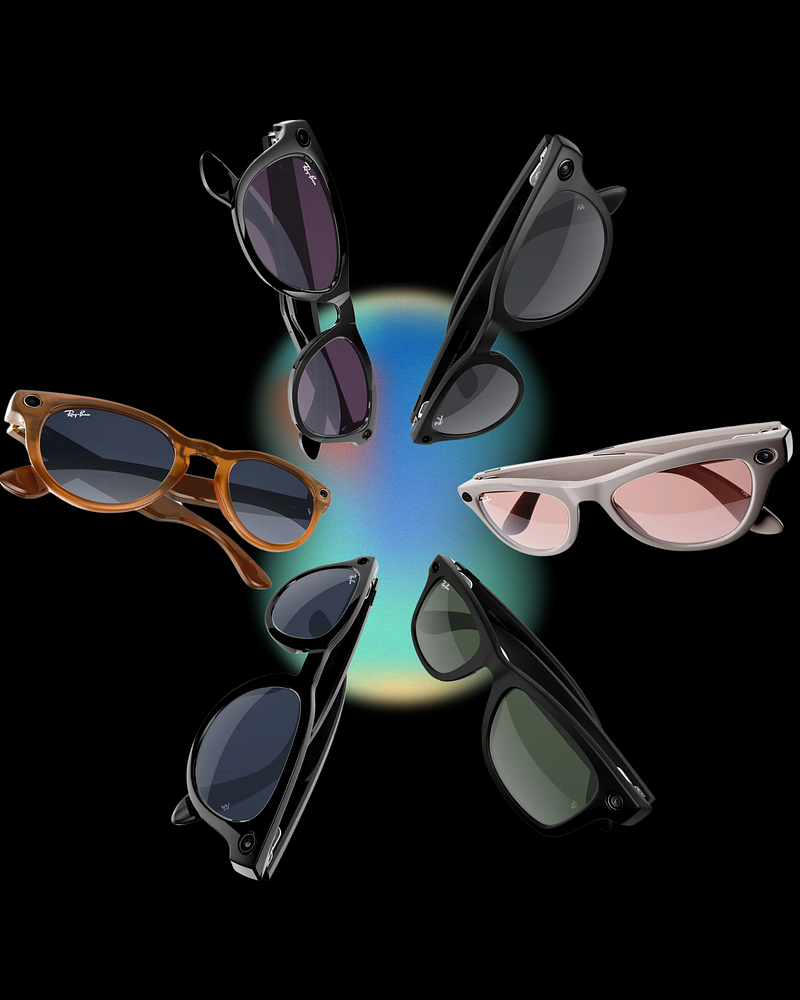We don’t want your smart tech. Or do we?
👉 If you’re not a Medium member, read this story for free here 💗

Do you remember the fever dream that was Snapchat Spectacles? The bold, neon-rimmed eyewear that promised to change the way we connect, blending our physical and digital worlds seamlessly. Launched with wild fanfare in 2016, Spectacles were meant to be the hands-free answer to social sharing — a quick tap on your frames, and you’d capture life exactly as you saw it. It was a concept as futuristic as it was cool, a glimpse of how wearable tech might redefine our digital lives. But the reality? Not so much.
After an initial flurry of excitement (and thousands waiting in line at pop-up vending machines), the hype fizzled. Spectacles moved units early on but left Snap with nearly $40 million in unsold inventory by the end of 2017, while subsequent models only sold in the tens of thousands. Despite the cultural allure of blending reality with tech, this vision of an “augmented” world hasn’t caught on in any lasting way. Instead, these experiments keep coming and going — stirring a burst of curiosity and clicks before vanishing into a familiar tech graveyard.
Fast forward to Apple’s Vision Pro announcement, and the cycle repeats. The headlines declare the arrival of the “future,” and there’s a renewed frenzy online. It’s the same promise in shinier packaging, this time from the world’s most influential tech giant. But for all the intrigue, a question lingers: is the future really here? And even if it is, do we actually want it?
Curiosity around wearable tech and AR remains as high as ever, but so do doubts about its practicality. Are we ready to invite even more technology into our lives? Until these products move beyond novelty and solve a real need, they may stay as they are: fascinating glimpses into a future we’re not quite ready to claim.

It’s true: we’re living more of our lives online than ever before. The average person clocks in at an astounding six and a half hours of screen time per day, with a solid 2.5 of those hours spent scrolling through social media feeds. We’re more connected, more online, and more in the loop. But even with these staggering numbers, it seems we’re not quite ready to take that leap into the digital future that tech giants are betting on.
Apple recently announced it’s scaling back the production of its Vision Pro headset, a device pitched as our portal to a seamless digital experience within the “metaverse.” The excitement was there — but so were the doubts. The question isn’t whether we’ll spend time online (that’s a given); it’s whether we’re ready to strap on headsets and make it a fully immersive experience.
Sure, curiosity around augmented and virtual reality is high, but the pull to adopt these devices isn’t quite sticking. For now, our digital lives are thriving through phones, laptops, and screens we’re already comfortable with. Six and a half hours a day online? We’re there. But strapping into the metaverse? Maybe not just yet.
Not all wearable tech has struggled to find its place. In a world where health and wellness are top priorities, devices focused on fitness and self-care are thriving. Smartwatches, rings, and sleep-tracking devices are seeing strong, consistent growth, appealing to consumers more interested in their health stats than virtual worlds. The numbers back it up: in 2023, the wearable health and fitness market grew by over 12%, with more than 30% of U.S. adults now using devices like smartwatches to track their steps, heart rate, and even sleep quality.
Wearables like the Apple Watch and Oura Ring are leading the charge, evolving from simple activity trackers to full-blown health monitors. From measuring blood oxygen levels to providing recovery scores, these gadgets are fitting seamlessly into our lives as the demand for health insight rises. And this trend isn’t limited to the U.S. — global sales are booming, with the Asia-Pacific region seeing a growth surge, as people worldwide embrace the tech that helps them sleep, track, and move better.
Unlike metaverse headsets, which often feel like tech solutions in search of a problem, health-focused wearables meet consumers right where they’re at — bringing real, measurable benefits that connect to everyday life. Bit by bit, these devices are redefining the future of wellness, making wearable tech something people actually want to wear.
So, where does this leave us? As much as tech giants try to nudge us into a fully immersive, alternate reality, it’s clear that not every innovation will stick. The wild launches and dazzling promises keep coming, but the real winners in wearable tech are those that solve everyday needs right now. Fitness trackers, sleep monitors, and health insights — these are the devices we actually make room for in our lives because they serve a tangible purpose.
The vision for augmented and virtual realities might still get there someday, but until then, people are staying grounded, gravitating toward technology that meets them where they are. It’s a reminder that no matter how futuristic the pitch, true innovation doesn’t just show us a new world; it fits seamlessly into the one we’re already living in.





